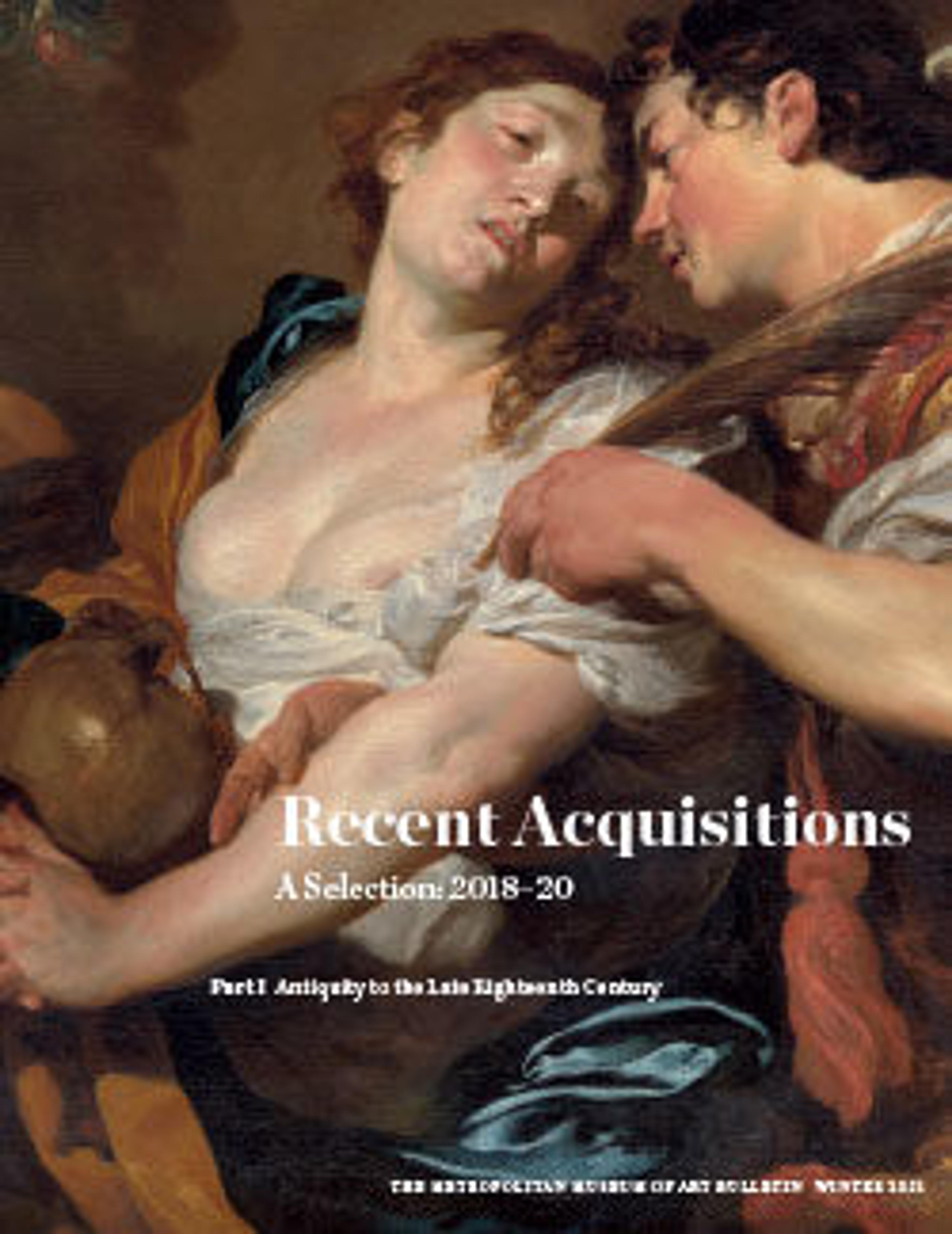The Declaration of Love
This celebrated painting and its nearby pendant, The Garter, exemplify a genre of painting known as tableaux de mode (paintings of fashionable society) established by de Troy. Rejecting religious or mythological subjects, artists represented the latest interior decoration, clothing, etiquette, and social mores. Here an amorous couple flirts beneath an image of Mars and Venus, relegated to wall decoration, while the eager dog hints none too subtly at the passions concealed behind their delicate gestures. In the 1720s, the meticulous rhyming of curves among picture frame, chair rail, and sofa was extremely in vogue, but in de Troy’s composition it also underscores the theme of physical union.
Artwork Details
- Title:The Declaration of Love
- Artist:Jean François de Troy (French, Paris 1679–1752 Rome)
- Date:ca. 1724
- Medium:Oil on canvas
- Dimensions:25 5/8 × 21 in. (65.1 × 53.3 cm)
- Classification:Paintings
- Credit Line:Bequest of Mrs. Charles Wrightsman, 2019
- Object Number:2019.141.21
- Curatorial Department: European Paintings
More Artwork
Research Resources
The Met provides unparalleled resources for research and welcomes an international community of students and scholars. The Met's Open Access API is where creators and researchers can connect to the The Met collection. Open Access data and public domain images are available for unrestricted commercial and noncommercial use without permission or fee.
To request images under copyright and other restrictions, please use this Image Request form.
Feedback
We continue to research and examine historical and cultural context for objects in The Met collection. If you have comments or questions about this object record, please contact us using the form below. The Museum looks forward to receiving your comments.
